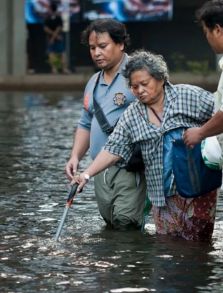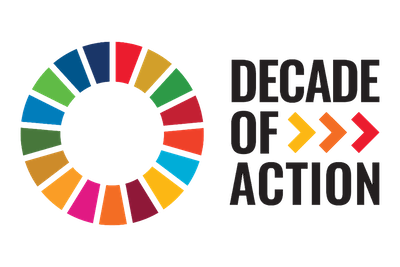
In 2020, Asia-Pacific saw the collision of climate extremes and COVID-19 transmission create cascading disasters with wide-ranging impacts on sectors, economies, and populations.
The year presented a new landscape of cascading risks.
From risks to uncertainties: more complex scenarios
Last year, climate-related disasters affected over 75 million people and caused almost 6000 deaths in the region. Of these deaths, floods contributed to 68 per cent, followed by tropical cyclones (16 per cent) and landslides (15 per cent).
Additionally, 21 million cases of COVID-19 were reported, along with approximately 366,000 deaths. While deaths caused by climate-related disasters were far lower than those caused by COVID-19, they impacted three times more people. Together, the converging disasters resulted in at least 372,000 deaths and affected more than 96 million people.
Heavy monsoon flooding in India is a prime example of this convergence. In Assam, the highest single-day spike of over 1,200 COVID-19 cases occurred during the heaviest floods and multiplied the impacts on vulnerable populations. For example, farmers whose crops were damaged by the floods and were unable to harvest the surviving crops due to the pandemic lockdowns.
Expanding hotspots of vulnerability
New cascading risks will likely create additional hotspots of vulnerabilities, impoverishing people and reversing progress towards a host of Sustainable Development Goals (SDGs).
The South and South West Asia subregion was the most impacted by climate-related natural disasters, followed by South East Asia, East and North East Asia, the Pacific, and North and Central Asia. We saw a similar pattern with the impact of COVID-19, where South and South West Asia was the highest impacted followed by North and Central Asia (Table 1).
The impact of COVID-19 in disaster-risk hotspots such as the Ganga Brahmaputra and Meghna and Indus basins, the typhoon tracks of South East Asia, and the dust belts of South and South West Asia could push populations living near the poverty line into extreme poverty.
Thus, disaster management and public health systems' capacity to respond to the new climate-health-disaster nexus will inform the recovery from COVID-19 and beyond. These challenging times call for a paradigm shift from a single hazard, single-sector perspective to a multihazard, multi-sectoral and systemic risk perspective.
Table 1: Number of affected and deaths from COVID-19 and natural hazards in 2020 among ESCAP sub-regions
Critical investments to outpace natural and biological hazard risks
There are several vital pathways, which can support countries in building resilience to cascading hazards if operationalized.
First, building multiple and complex risk scenarios that incorporate converging biological and natural hazard risks will be a priority. These scenarios should capture the deep uncertainties of systemic risks with cascading impacts. They can identify hotspots of emerging diseases, including those with pandemic potential, for well-informed policy interventions. Composite risk matrices that identify and stratify vulnerable populations, locations, and their different needs and capacities will form the backbone of new and updated standard operating procedures, local, state, and national policies, and regional cooperation efforts. Countries need to lay the foundations for these scenarios now while responding to the current crisis, for a robust, sustained, and socially inclusive response grounded in the pursuit of the SDGs.
Second, we need to use emerging technologies to their full potential. When cyclones Nisarga and Amphan hit South Asia during the COVID-19 pandemic, technologies such as early detection, rapid diagnostics, and algorithms detected clusters of illness in vulnerable areas. The experience of managing climate and health disasters during COVID-19 has also re-established the importance of integrating advanced climate science into decision-making. In India, supercomputers and satellite imagery are producing state-of-the-art weather and climate models. We must now apply this science to public health and disaster management. Translating climate model outputs into inputs for building complex risk scenarios will support evidence-based decision-making in multiple sectors.
Third, we need to update early warning systems in health and disaster management with the latest risk information. Governments should build comprehensive all-hazard plans that deal with multiple and compounded risks and the intersections of vulnerabilities and impacts. Early warning systems for health, for example, need to be based on meteorological parameters since changes in rainfall and temperature patterns increase the incidences of many diseases.
The Special High-Level Meeting on Disaster and Climate Resilience held against the backdrop of the Fourth South Asia SDG Forum on 4 December 2020 demonstrated the political wisdom to address cascading risk issues in the broader context of the 2030 Agenda for Sustainable Development. Recognizing the severe impacts of cascading disasters in South Asia, ministers from Afghanistan, Bangladesh, India, Maldives, and Pakistan provided recommendations on the way forward to scale up regional cooperation for cascading risks to build back better with disaster and climate resilience in the post-COVID-19 era.
----------------------
Support to authoring this article was provided by Jeong Won Min



